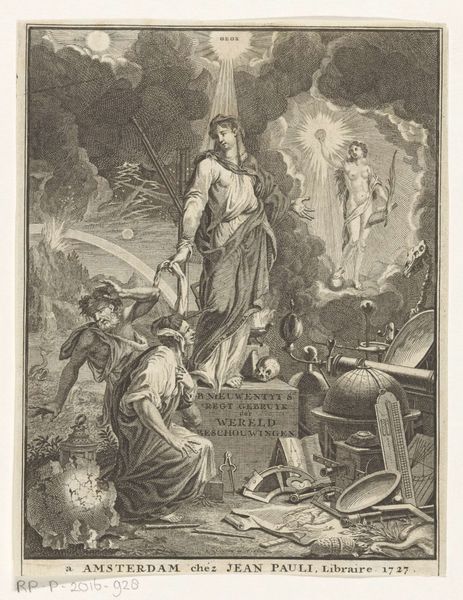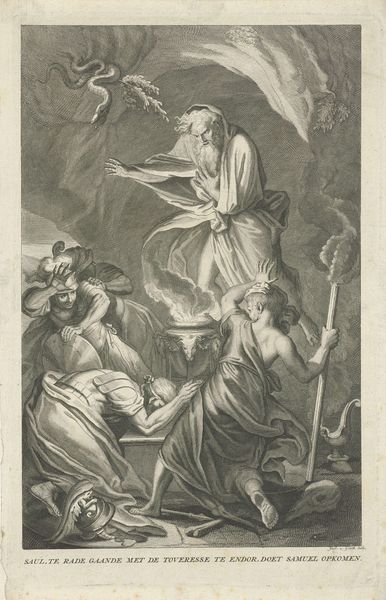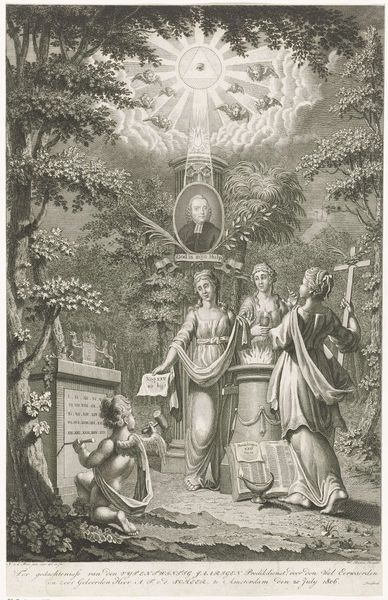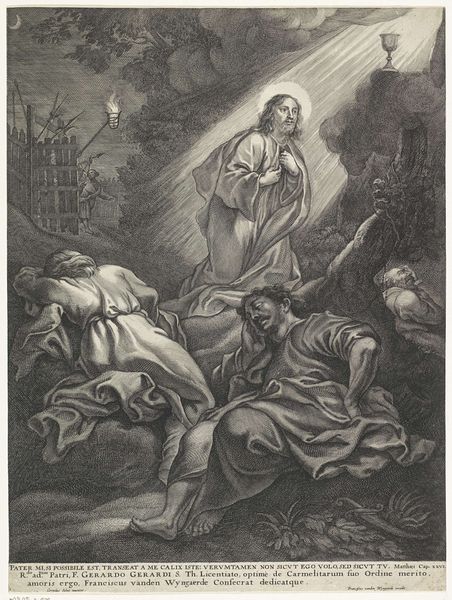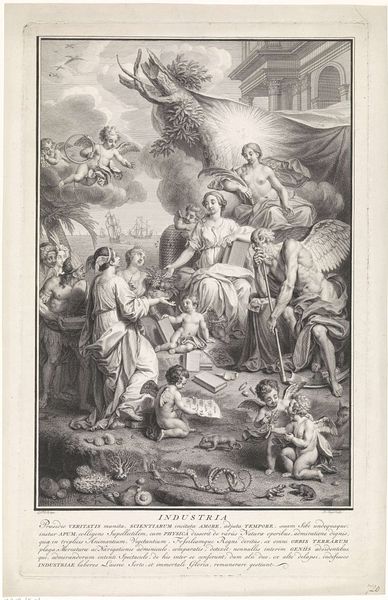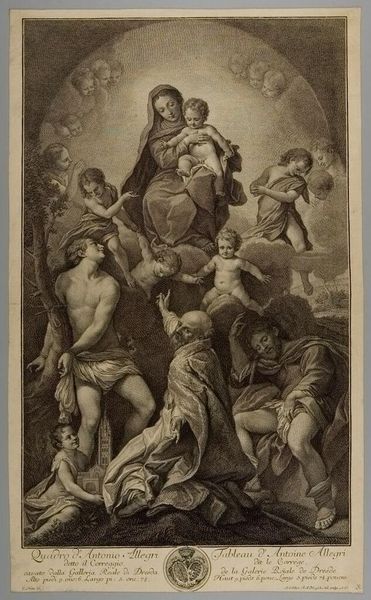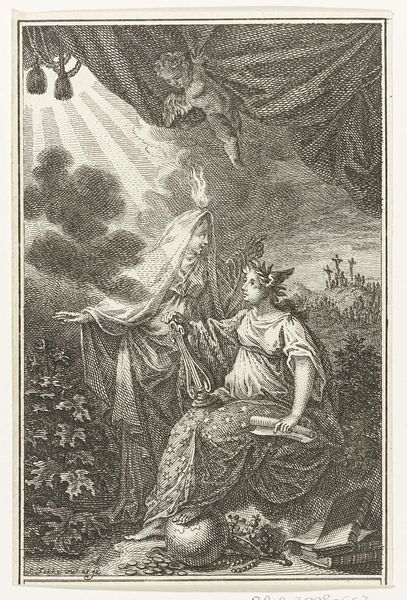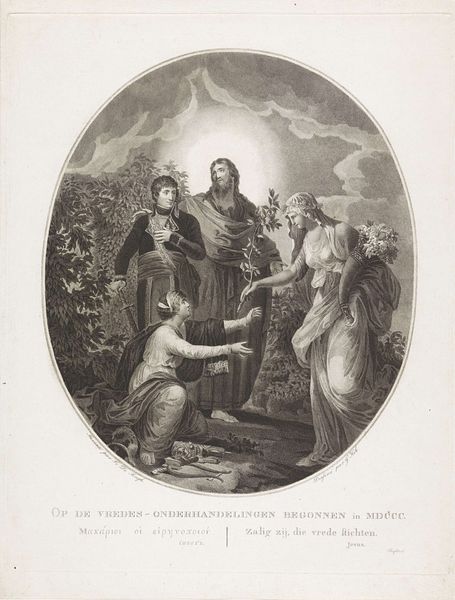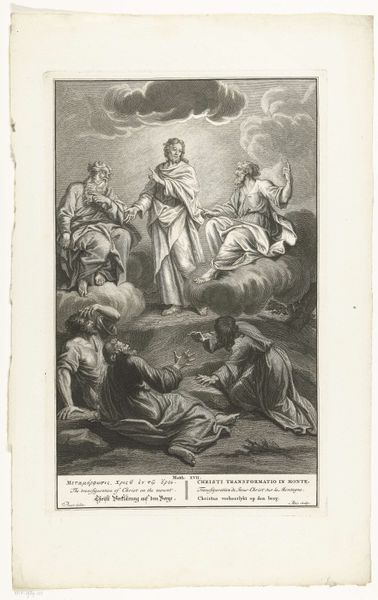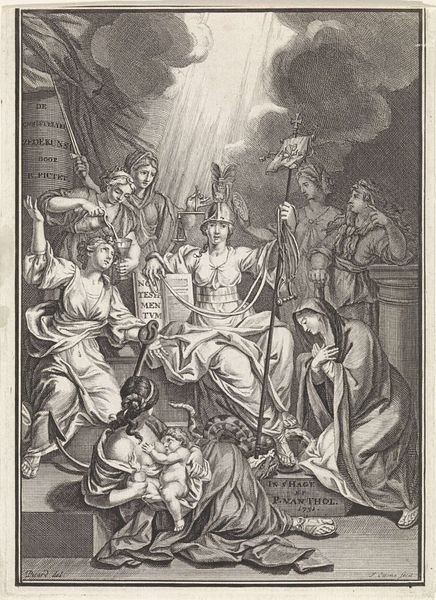
drawing, pencil
#
pencil drawn
#
drawing
#
neoclacissism
#
allegory
#
figuration
#
pencil drawing
#
pencil
#
history-painting
Dimensions: height 578 mm, width 428 mm
Copyright: Rijks Museum: Open Domain
Editor: So, here we have "Allegorische voorstelling van de Rede," or "Allegorical Representation of Reason," a pencil drawing from between 1802 and 1819, attributed to Willem van Senus. It's incredibly detailed for a pencil work. There's a rather somber tone. What's your read on this piece? Curator: What strikes me is how explicitly this drawing participates in a very specific socio-political discourse of its time. It is drawing upon Neoclassical aesthetics to depict abstract concepts – Reason in this case. We need to ask, what role did the allegorical tradition play in shaping public understanding of Enlightenment ideals? Editor: That makes sense, especially with the Roman figures. But I thought that Neoclassicism celebrated order and progress. This seems more... weighty? Curator: Indeed. Notice how Reason, the central figure, is flanked by contrasting figures. Minerva represents wisdom and war, while the veiled figure perhaps signifies sorrow or regret. How might these figures reflect the historical context following the French Revolution, and the subsequent questioning of Enlightenment ideals? Do you notice that shackled figure down below in the clouds? Editor: Yes, there seems to be the figure is held by a chain of Reason? That suggests the triumph of reason but at a cost, maybe suppressing emotions or instincts? Curator: Precisely. Consider the role of institutions like the Rijksmuseum, where this work resides. How does placing an artwork like this in a national collection shape our understanding of Dutch identity and its relationship to broader European intellectual movements? Editor: So, it's not just a drawing; it's a statement about how the Dutch viewed reason and progress during a turbulent period? Curator: Exactly! Art doesn't exist in a vacuum. Its meaning is actively shaped by historical context, social forces, and the institutions that present it. Editor: This really sheds new light on how we see Neoclassicism and how museums display it! Thank you for your insights.
Comments
No comments
Be the first to comment and join the conversation on the ultimate creative platform.
